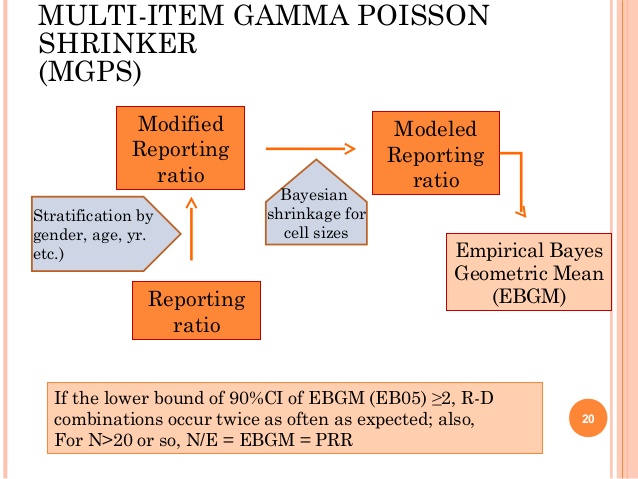MGPS vs. RGPS

Regression-Adjusted GPS Algorithm (RGPS)
vs.
Multi-item Gamma Poisson Shrinker (MGPS)
RIR, ROR, MGPS, etc methods do not adjust for the effects of polypharmacy—patients taking multiple drugs at the same time, and that drugs for the same indication will show up in the same patient reports, creating confounding issues and other potential statistical biases. Hence, RGPS comes in.
In general, RGPS differs from MGPS, PRR, and ROR computations in that it adjusts for the effects of polypharmacy and therefore reduces the likelihood of masking biases and “innocent bystander” biases. These biases occur when a drug other than the drug of interest is highly associated with the event of interest.
Masking bias occurs when a highly associated drug other than the drug of interest appears in greater number in reports that do not also include the drug of interest. Masking bias inflates the expected count for a drug-event combination of interest. Consequently, the disproportionality estimate for the drug-event combination of interest is reduced. A lower disproportionality estimate can lead to a missed signal.
“Innocent bystander” bias occurs when a drug with no causal connection to an adverse event is often co-prescribed with a highly associated drug. In this case, both drugs can appear to be associated with the adverse event.
Like MGPS, RGPS calculates a Relative Reporting Ratio (RR) for each itemset in the database. The RR is defined as the observed count (N) for the itemset divided by the expected count (E). However, RGPS computes E using the results of an Extended Logistic Regression (ELR) analysis rather than the Mantel-Haenszel approach